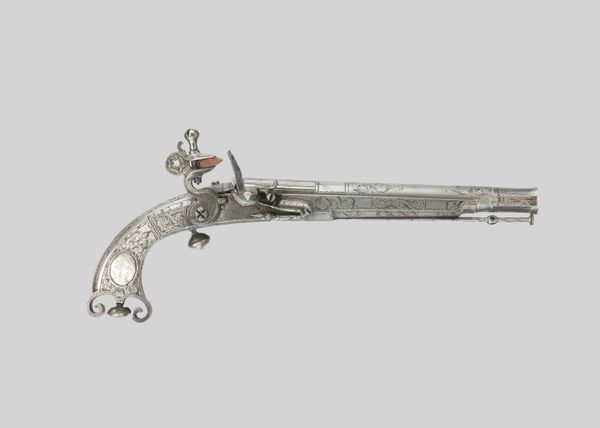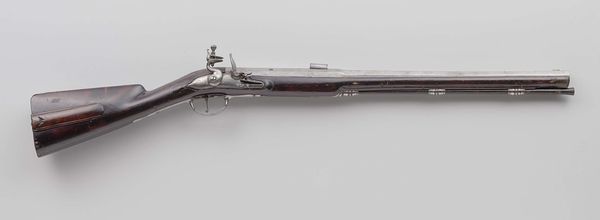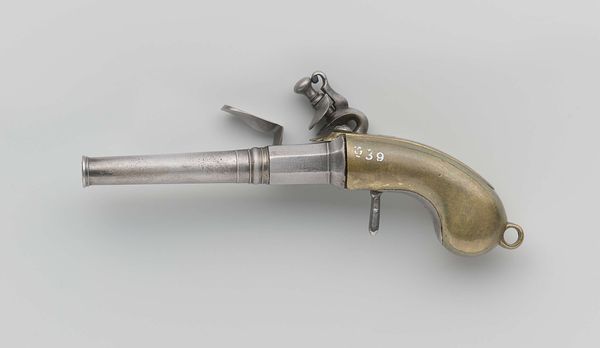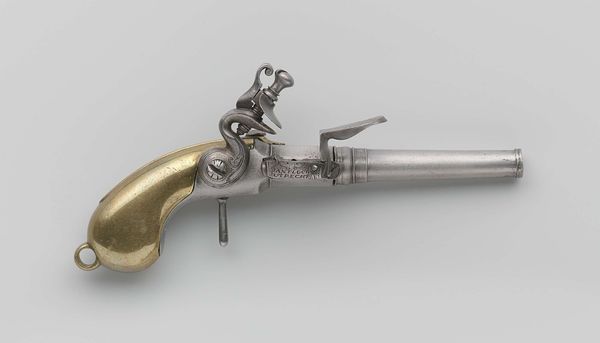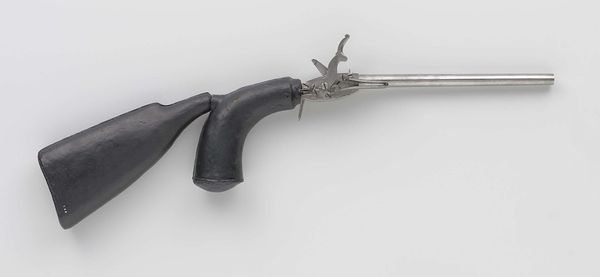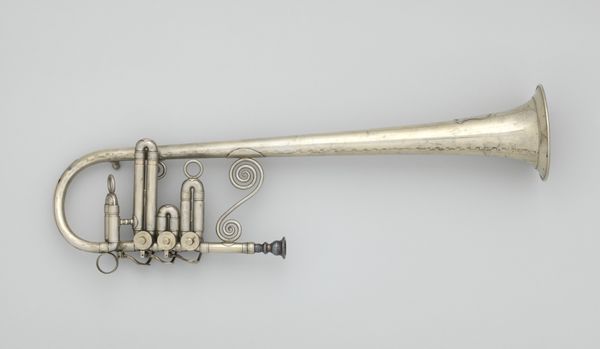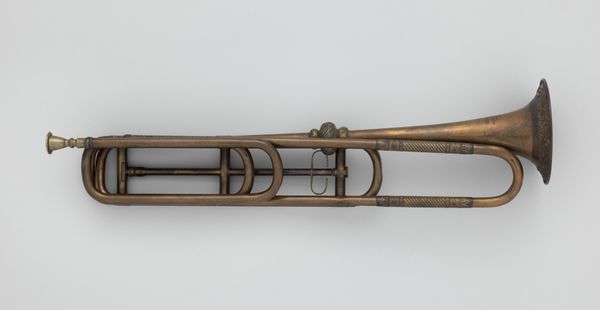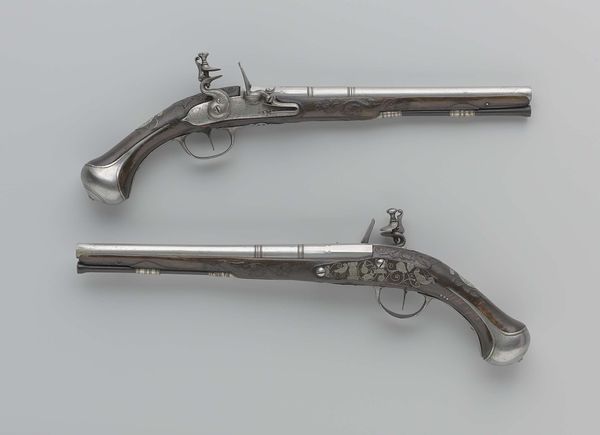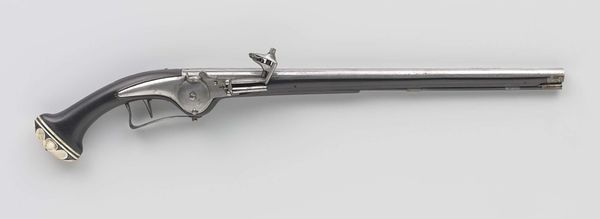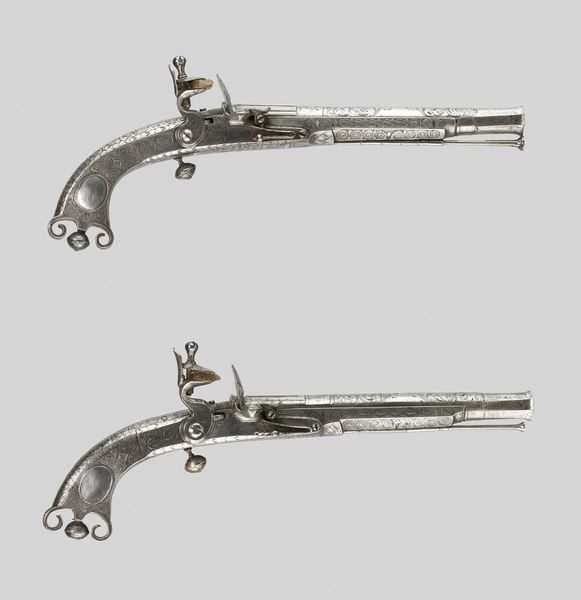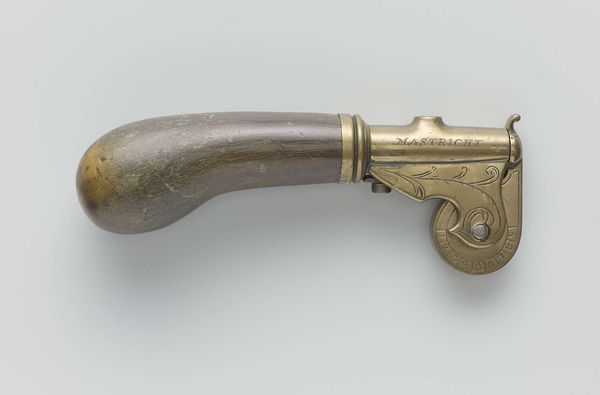
Dimensions: Overall L. 28 cm (11 in.) Barrel L. 18 cm (7 1/8 in.) Caliber .57 Wt. 1 lb. 6 oz.
Copyright: Public Domain
Curator: Take a moment to consider this Flintlock Belt Pistol from around 1780. Notice its baroque and rococo style, crafted primarily from silver and metal. What’s your first impression? Editor: My first thought is… excess. It's like a deadly weapon dressed up for a debutante ball. All that ornamentation seems wildly inappropriate. Curator: Inappropriate, perhaps, from our contemporary viewpoint. But let's consider the labor involved. The intricate engravings weren't just decorative; they were a display of wealth and the skill of the artisan, signaling the owner’s status and power. What narratives can we trace in the decorations, and in whose hands would it be wielded? Editor: Absolutely. Power, class, violence, colonialism… They are all woven into the object's very existence. Who owned it? Who was subjected to it? Guns were critical tools for imperial expansion and consolidating power. This probably means enslavement and even genocide were enabled. It is far removed from our conceptions of something beautiful. Curator: Right, consider the silversmith or metalworker, meticulously embellishing this pistol. What were their lives like? Were they free artisans, or were they perhaps, working under coercion, creating symbols of power they themselves could never wield? Did these skilled labourers perhaps also want to claim this power? We can see a complex narrative embedded in the object itself. Editor: Exactly. We can use art to confront difficult histories and think about the role of objects in perpetuating inequalities. It speaks volumes about the societies of the late 18th century. The ornamentation then isn’t merely decoration—it is propaganda for social hierarchy, and we're forced to think about not only who created this object but what broader systems facilitated their making of it. Curator: Ultimately, even something seemingly straightforward can become a lens for exploring profound questions about power, labour, and social order. Editor: It reminds us that art is never neutral. It reflects, reinforces, and sometimes challenges the values of its time. We can't just admire its aesthetics, we must ask ourselves critical questions and think about art and its involvement in violence and colonial narratives.
Comments
No comments
Be the first to comment and join the conversation on the ultimate creative platform.
